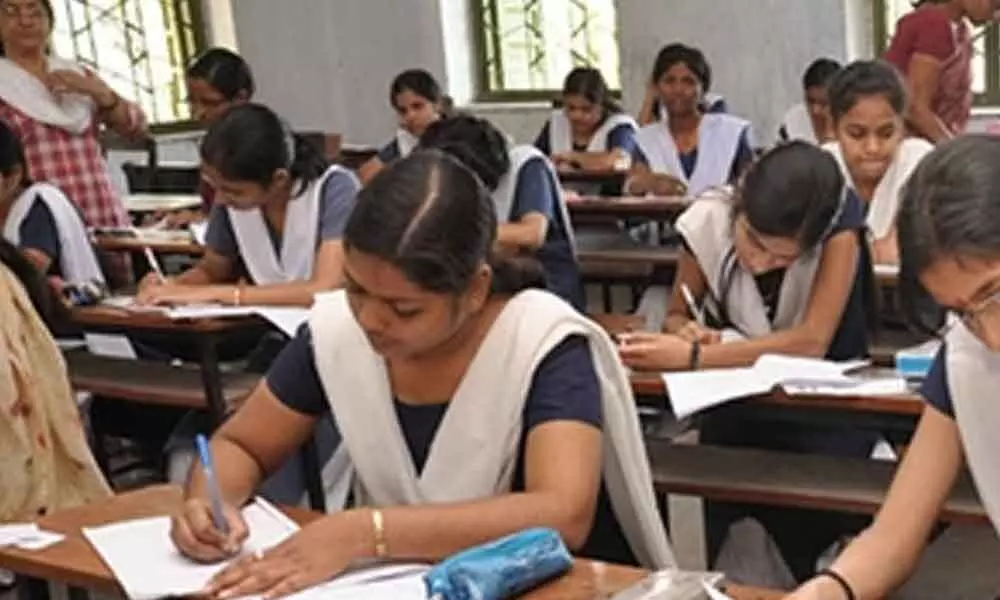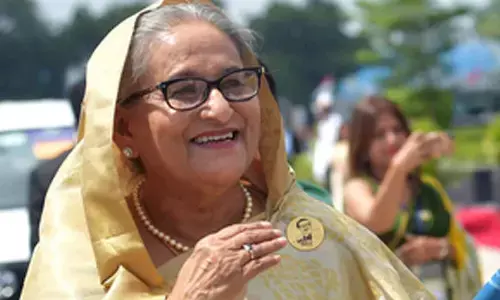Hyderabad: Student-pupil ratio goes for a toss due to RTE norms violation

Student-pupil ratio goes for a toss due to RTE norms violation
- The number of students to govt schools has gone down with the opening of new model schools, Gurukul schools, and KGBVs
- Lack of govt English medium schools left parents to shift their wards into private schools
Hyderabad: Granting relaxations and violations in the implementation of the provisions of the Right to Education Act (RTE) over years has created a mess in maintaining the students-teachers ratio in several schools in the State. It may be mentioned here that the RTE Act provides running a primary school for every kilometre, an upper primary school for every three kilometreThe number of students to govt schools has gone down with the opening of new model schools, Gurukul schools, and KGBVss, and a higher school for every five kilometres.Accordingly, every successive government has either started a new school or upgraded the existing school. But the catch was that the provisions related to the distance were not strictly adhered to in establishing and upgrading the existing schools."Hundreds of schools were started or upgraded in the villages and towns. But they were done considering local situations and at the requests of the people's representatives and other leaders," says Telangana Headmasters Association, general secretary Raja Bhanu.
For this, the successive governments have given relaxations in maintaining the distance as stipulated in the RTE Act. While doing so, it was not taken into consideration whether the school will be in a position to get a minimum number of students within its catchment area to run it there was no forecasting done on the potential number of students from the population in a village and area-wise the benchmarking of the RTE Act.Temporarily there was a sufficient number of schools in the initial stages, particularly, after the formation of Telangana, the State government has started new model schools, KGBV, and different Gurukul Residential Welfare Schools across the State in good numbers, as the newly started schools have better facilities most of the students within the catchment area of the existing government schools run under Zilla Parishad, Mandal Parishad, and the government has started flocking to take admission into the new schools, as an effect, all this has resulted in a drastic fall in the number of students going to government schools,alsothe lack of English medium schools run by the government left parents to shift their wards into private schools,the migrations from villages to the towns for livelihoods is another factor that resulted in the number of students going to government schools in the villages going down, on top of it all, the lack of regular MEOs and Deputy EOs to oversee the administration of the schools has literally left things going away.
The cumulative effect of this boiled down to schools being run without a proper student-teacher ratio.For example, there are 4,187 ZPH Schools in which 48,661 teachers are working with a student strength of 7,62,333. It comes that every school has 182 students and every classroom has a student strength of 36, butin reality, there are 410 schools where less than 10 students are attending, and 3,322 teachers are working in such schools.Similar is the situation in Mandal Parishad Upper Primary schools that there are 1,975 schools with less than 10 students per classroom,but the number of teachers working is 10,010. The Mandal Parishad Primary School situation is also no different. There are 12,125 schools with less than 10 students per classroom in which 23,096 teachers are working.
A similar scenario is prevailing in the other government-run primary, upper primary, and high schools. In turn, it is resulting in the failure in the optimum utilisation of teachers by maintaining the prescribed student-teacher ratio.











